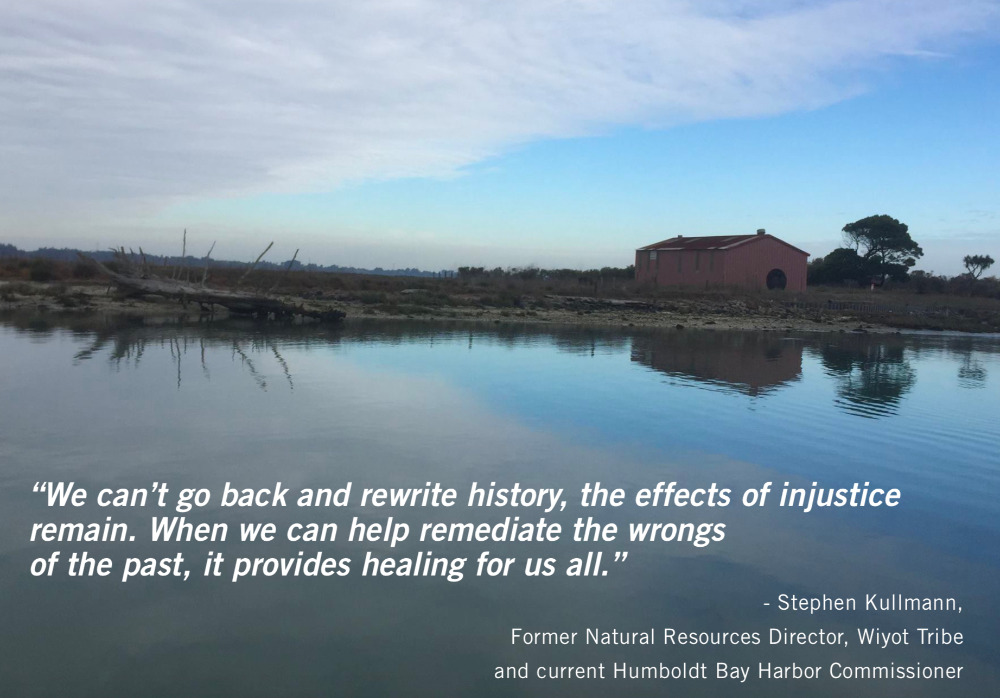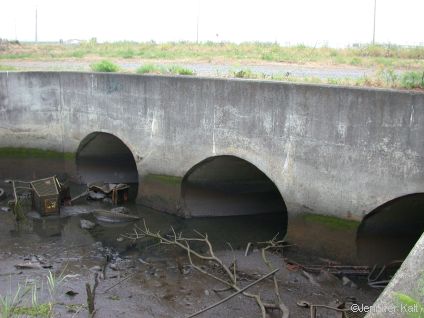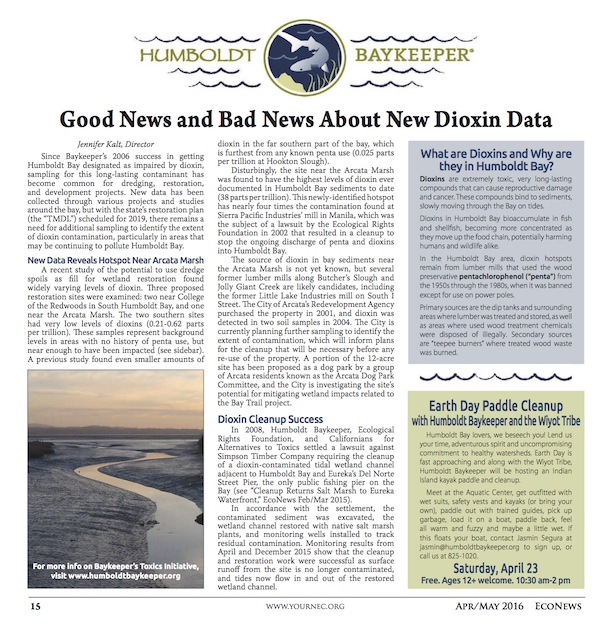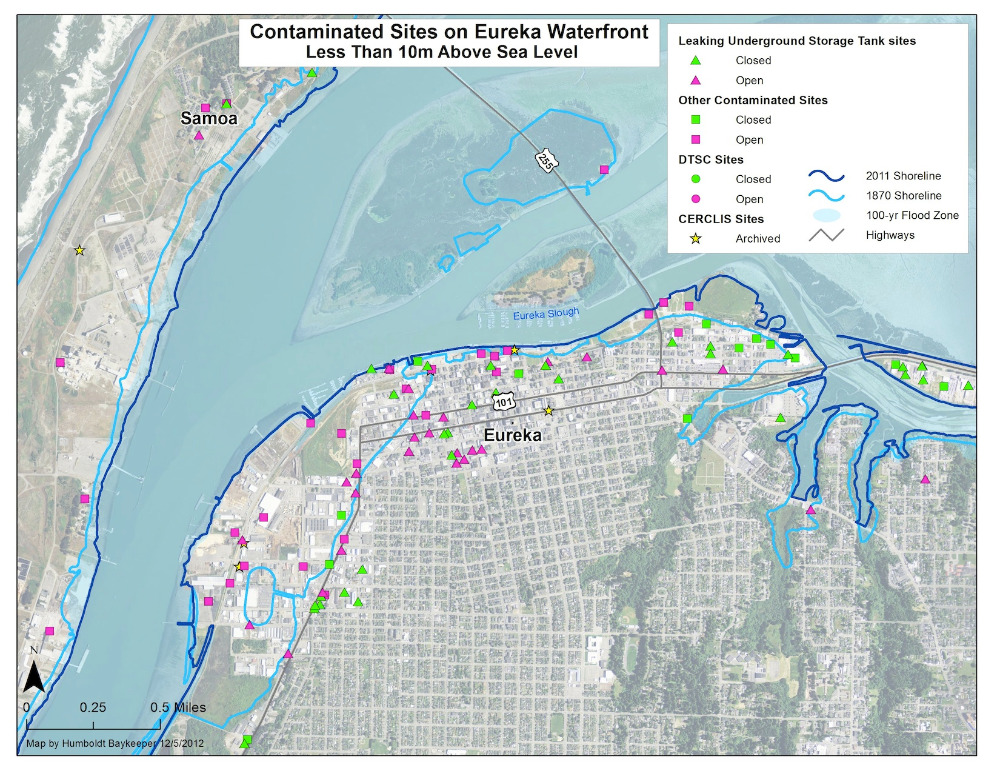The Wiyot Tribe's Long Path to Renewing Indian Island
 On the August edition of Baykeeper’s EcoNews Report, Jen Kalt interviews Ted Hernandez, Michelle Vassel, and Tim Nelson, of the Wiyot Tribe about the return of Indian Island to the tribe, the cleanup of the contaminated former boatyard at Tuluwat Village, and the recent revival of the tribe’s World Renewal ceremonies that were interrupted in 1860 by brutal massacres.
On the August edition of Baykeeper’s EcoNews Report, Jen Kalt interviews Ted Hernandez, Michelle Vassel, and Tim Nelson, of the Wiyot Tribe about the return of Indian Island to the tribe, the cleanup of the contaminated former boatyard at Tuluwat Village, and the recent revival of the tribe’s World Renewal ceremonies that were interrupted in 1860 by brutal massacres.  Humboldt Waterkeeper addresses water pollution on a case-by-case basis, and provides information to encourage residents to take action to address the problem of toxics in our environment. Historic industrial activity continues to impact the Bay and adjacent waterways as well as human health and the area’s economy. Dioxins, heavy metals, petroleum products, and other contaminants persist in areas where they were used in the past, and continue to enter Humboldt Bay and coastal waters through stormwater and groundwater discharges. Humboldt Waterkeeper works to stop this ongoing problem by seeking cleanup of these sites. A major focus of Humboldt Waterkeeper’s Toxics Initiative is the past use of wood preservatives at dozens of lumber mills that once lined the shores of the Bay and its tributaries. The mills used the chemical
Humboldt Waterkeeper addresses water pollution on a case-by-case basis, and provides information to encourage residents to take action to address the problem of toxics in our environment. Historic industrial activity continues to impact the Bay and adjacent waterways as well as human health and the area’s economy. Dioxins, heavy metals, petroleum products, and other contaminants persist in areas where they were used in the past, and continue to enter Humboldt Bay and coastal waters through stormwater and groundwater discharges. Humboldt Waterkeeper works to stop this ongoing problem by seeking cleanup of these sites. A major focus of Humboldt Waterkeeper’s Toxics Initiative is the past use of wood preservatives at dozens of lumber mills that once lined the shores of the Bay and its tributaries. The mills used the chemical 



